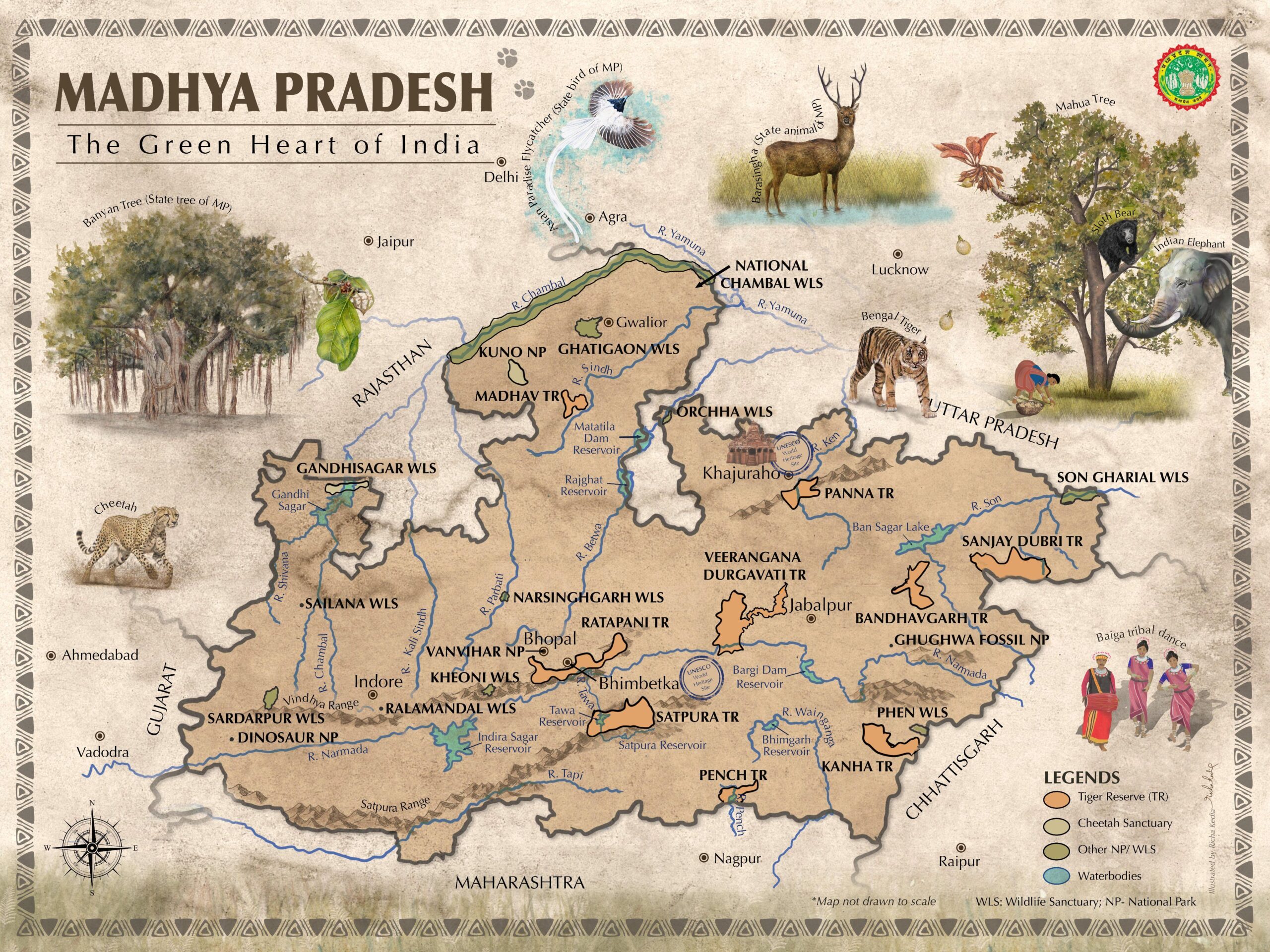Madhya Pradesh is one of India’s richest states in terms of wildlife and forests, making it a key place for nature conservation. It is home to six major tiger reserves—Kanha, Bandhavgarh, Panna, Pench, Satpura, and Sanjay Dubri. These reserves provide a safe habitat for the majestic Bengal tiger and many other animals like leopards, sloth bears, barasingha (swamp deer), and Indian elephants. The state is also home to a wide variety of birds, making it a paradise for bird watchers.
Madhya Pradesh has played a vital role in India’s conservation efforts. One of the most significant projects has been the reintroduction of cheetahs in Kuno National Park. After being extinct in India for decades, these big cats have been brought back and are now adapting to their new home. Other protected areas like Gandhisagar, Narsinghgarh, Son Gharial, Ghatigaon, and Sailana wildlife sanctuaries help preserve different ecosystems, from rivers to dense forests. Another fascinating site is the Ghughwa Fossil National Park, which has plant fossils that are millions of years old.
The latest wildlife map of Madhya Pradesh highlights the state’s incredible biodiversity. It features 9 tiger reserves and 2 cheetah sanctuaries, showing the efforts taken to protect these magnificent animals.

Madhya Pradesh is not just about forests and wildlife; it is also blessed with major rivers like Narmada, Chambal, Betwa, Son, and Tapti, which provide water to both wildlife and people. The Satpura and Vindhya mountain ranges add to the state’s natural beauty and make it a perfect habitat for diverse flora and fauna. The state tree is the Banyan, the state bird is the Paradise Flycatcher, and the state animal is the Barasingha, reflecting the state’s deep connection with nature.
Madhya Pradesh has 11 national parks, which are Bandhavgarh, Kanha, Satpura, Sanjay, Madhav, Van Vihar, Mandla Plant Fossils, Panna, Pench, Kuno, and Dinosaur Fossil National Park. These parks are home to a variety of wildlife, including tigers, leopards, elephants, and many other species.
The state also has several wildlife sanctuaries and natural reserves, such as Achanakmar-Amarkantak Biosphere Reserve, Patalkot, Bagh Caves, Bhedaghat, Bori Wildlife Sanctuary, Ken Gharial Sanctuary, Ghatigaon Wildlife Sanctuary, Kuno-Palpur Wildlife Sanctuary, Narwar, National Chambal Sanctuary, Kukdeshwar, Narsinghgarh, Nauradehi Wildlife Sanctuary, Pachmarhi Biosphere Reserve, Panpatha, Shikarganj, and Tamia. These areas help protect rare animals, birds, and plants, making Madhya Pradesh an important place for nature and wildlife conservation.
Support us to keep independent environmental journalism alive in India.
Keep Reading
California Fires Live updates: destructive wildfires in history
Hollywood Hills burning video is fake and AI generated
Devastating wildfire in California: wind, dry conditions to blame?
Los Angeles Cracks Under Water Pressure
From tourist paradise to waste wasteland: Sindh River Cry for help
Follow Ground Report on X, Instagram and Facebook for environmental and underreported stories from the margins. Give us feedback on our email id greport2018@gmail.com.
Don’t forget to Subscribe to our weekly newsletter, Join our community on WhatsApp, and Follow our YouTube Channel






